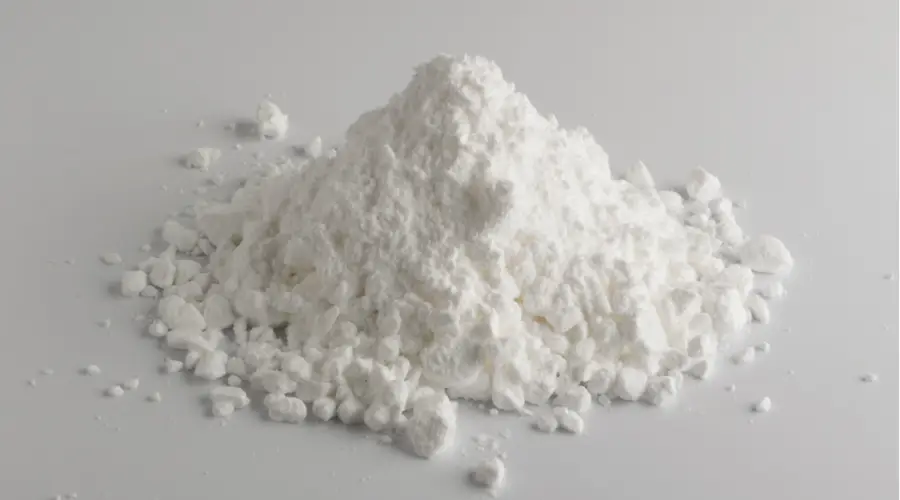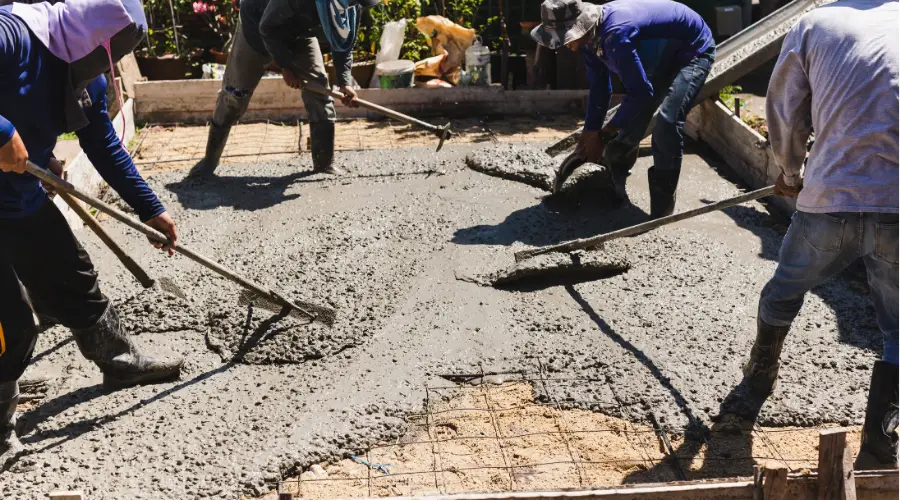Cement is extensively used in the construction industry. Gypsum is used as a hardening agent in cement. Gypsum is a non-sulfate, soft mineral that can be mined and extracted globally. When used in construction materials, it helps to enhance their workability, durability, and resistance to cracking.
The global gypsum production amounted to 160 million metric tons as an estimate in 2023. Gypsum occurs naturally between the sedimentary rock layers. The largest producer of gypsum in the entire world is China. In India, approximately 4.3 million metric tons, a small fraction of the world’s production (160 million metric tons) of gypsum, are estimated to be extracted from the mines.
In 2024–2025, cement production is estimated to increase by around 491 MT, of which the cement industry alone will need 19.6–24.6 MT. Gypsum is an important element that has many uses in cement, read on to learn more about it.
What is Gypsum?

Gypsum, popularly known as a common sulfate mineral, has significant commercial importance worldwide. It is mostly made of calcium sulfate dihydrate. The chemical formula is CaSO₄·2H₂O. Gypsum is commonly found in between the layers of sedimentary rocks. It is often used with many other minerals, such as celestine, dolomite, calcite, anhydrite, halite, sulfur, and aragonite. Gypsum, when dry, contains calcium (23%) and sulfur (17%).
Uses of Gypsum in Cement

Gypsum acts as a binding agent in the cement and. controls various factors in it. It is also used in the walls where fire protection is required since it .has a natural fire-resistance property. Let’s look at its uses.
Hydration Process:
Rate of hardening:
During the final grinding process of the cement, gypsum is added. This should only be done once the clinker has cooled down during the cement manufacturing process. Gypsum also helps in controlling the rate at which the cement hardens. After the cement is mixed with water, the gypsum helps in preventing the setting of cement immediately. This gives sufficient time for mixing, transporting, and fixing the concrete.
Gypsum as a coolant:
Cement contains constituents of sulfates and aluminates, which. generates heat upon mixing with water. Gypsum controls this heat of hydration and becomes a coolant in the cement.
Improves the cement strength:
Gypsum produces hydrating products like ettringite, which results in denser composition of concrete. This, in turn, adds compressive strength to the cement.
Refining the structural pores:
Gypsum can help in the morphological development of the cement structure. It refines the cement’s structural pores and improves the microstructure of hydration.
Setting time regulation
Gypsum helps in preventing the flash setting of the cement. It slows down the cement setting time, allowing space for other processes. How can it be done? When molasses solutions are added, they react with the gypsum to retard the hardening time.
Workability
Gypsum in cement reduces friction between its particles, thus resulting in a mix with higher smoothness and improved workability.
Durability
Gypsum increases the durability of cement structures or elements by providing improved resistance to chemical attacks by sulfates and alkali-silicates.
Effects of Gypsum in the cement

- The C-S-H (calcium-silicate-hydrate) morphology: By modifying the morphology of C-S-H, the durability and strength of the cement can be enhanced. It is done by using supplementary cementitious materials like fly ash or slag.
- Controlling the reaction of tricalcium aluminate (C3A): Calcium sulfate also known as gypsum during grinding, can be added to clinker to control the reaction of C3A and prevent flash setting.
Flash setting is when C3A reacts directly with water and sets instantly. The hydration reaction of C3A shifts when gypsum is present and ettringite is formed instead of platey calcium aluminate hydrates. The more gypsum that’s added, the more the C3A reaction can be retarded. However, if too little sulfate is added, the aluminate peak may occur before the tricalcium silicate (C3S) peak, which can make the C3S peak smaller and broader.
- Boosting strength after hydration: This can be achieved by optimizing the water-to-cement ratio, utilizing high-performance admixtures, and ensuring appropriate curing conditions in cement.
- Reducing curing time: Gypsum can help reduce the cement curing time. These can quicken the hydration process, allowing the cement to gain strength more quickly.
Gypsum in construction works
- Gypsum fiberboard is used as a decorative plaster or building plaster for walls and ceilings. It offers good sound insulation, impact resistance, and humidity resistance.
- Gypsum plaster: can be applied to smooth or rough surfaces to create a smooth interior finish that’s resistant to cracking and shrinking and is a good base for paints and other wallcoverings
- Plasterboard: A type of wallboard made from gypsum and paper that’s easy to work with and strong and can be used to patch holes or cracks or replace entire sections of walls
- Gypsum-based self-leveling screed: Also known as gypsum concrete underlayment, this is a commonly used product that can be used in all types of projects, from renovations to new construction
Conclusion
Gypsum plays an essential role in the manufacturing of cement. It contributes to the strengthening, workability, setting time, and durability of the cement. The careful use of gypsum in cement production leads to enhanced performance, improved longevity, and advanced construction practices, making it an essential component in the construction industry. It has various advantages that are beneficial when added to cement.

